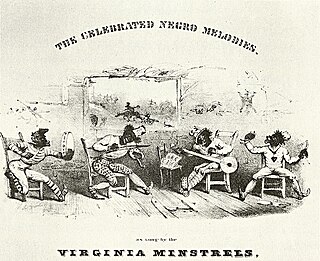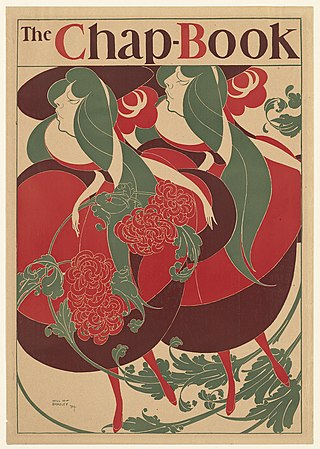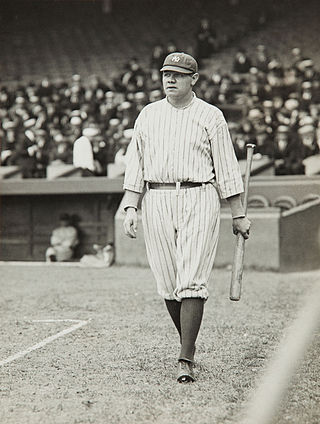
A cartoon is a type of visual art that is typically drawn, frequently animated, in an unrealistic or semi-realistic style. The specific meaning has evolved, but the modern usage usually refers to either: an image or series of images intended for satire, caricature, or humor; or a motion picture that relies on a sequence of illustrations for its animation. Someone who creates cartoons in the first sense is called a cartoonist, and in the second sense they are usually called an animator.

The minstrel show, also called minstrelsy, was an American form of theater developed in the early 19th century. The shows were performed by mostly white actors wearing blackface makeup for the purpose of comically portraying racial stereotypes of African Americans. There were also some African-American performers and black-only minstrel groups that formed and toured. Minstrel shows stereotyped blacks as dimwitted, lazy, buffoonish, cowardly, superstitious, and happy-go-lucky. Each show consisted of comic skits, variety acts, dancing, and music performances that depicted people specifically of African descent.
Comic relief is the inclusion of a humorous character, scene, or witty dialogue in an otherwise serious or dramatic work, often to relieve tension.

The National Police Gazette, commonly referred to as simply the Police Gazette, is an American magazine founded in 1845. Under publisher Richard K. Fox, it became the forerunner of the men's lifestyle magazine, the illustrated sports weekly, the girlie/pin-up magazine, the celebrity gossip column, Guinness World Records-style competitions, and modern tabloid/sensational journalism.

Sports journalism is a form of writing that reports on matters pertaining to sporting topics and competitions. Sports journalism started in the early 1980s when it was targeted to the social elite and transitioned into an integral part of the news business with newspapers having dedicated sports sections. The increased popularity of sports amongst the middle and lower class led to the more coverage of sports content in publications. The appetite for sports resulted in sports-only media such as Sports Illustrated and ESPN. There are many different forms of sports journalism, ranging from play-by-play and game recaps to analysis and investigative journalism on important developments in the sport. Technology and the internet age has massively changed the sports journalism space as it is struggling with the same problems that the broader category of print journalism is struggling with, mainly not being able to cover costs due to falling subscriptions. New forms of internet blogging and tweeting in the current millennium have pushed the boundaries of sports journalism.

In the United States, a little magazine is a magazine genre consisting of "artistic work which for reasons of commercial expediency is not acceptable to the money-minded periodicals or presses", according to a 1942 study by Frederick J. Hoffman, a professor of English. While George Plimpton disagreed with the diminutive connotations of "little", the name "little magazine" is widely accepted for such magazines. A little magazine is not necessarily a literary magazine, because while the majority of such magazines are literary in nature, containing poetry and fiction, a significant proportion of such magazines are not. Some have encompassed the full range of the arts, and others have grown from zine roots.
Beginning on July 7, 1834, New York City was torn by a huge antiabolitionist riot that lasted for nearly a week until it was put down by military force. "At times the rioters controlled whole sections of the city while they attacked the homes, businesses, and churches of abolitionist leaders and ransacked black neighborhoods."

George Washington Dixon was an American singer, stage actor, and newspaper editor. He rose to prominence as a blackface performer after performing "Coal Black Rose", "Zip Coon", and similar songs. He later turned to a career in journalism, during which he earned the enmity of members of the upper class for his frequent allegations against them.

The Bowery Theatre was a playhouse on the Bowery in the Lower East Side of Manhattan, New York City. Although it was founded by rich families to compete with the upscale Park Theatre, the Bowery saw its most successful period under the populist, pro-American management of Thomas Hamblin in the 1830s and 1840s. By the 1850s, the theatre came to cater to immigrant groups such as the Irish, Germans, and Chinese. It burned down four times in 17 years, a fire in 1929 destroying it for good. Although the theatre's name changed several times, it was generally referred to as the "Bowery Theatre".

The New York Clipper, also known as The Clipper, was a weekly entertainment newspaper published in New York City from 1853 to 1924. It covered many topics, including circuses, dance, music, the outdoors, sports, and theatre. It had a circulation of about 25,000. The publishers also produced the yearly New York Clipper Annual. In 1924, The Clipper was absorbed into the entertainment journal Variety.

Gabriel Shear Tregear, also known as Gabriel Shire Tregear, was an English publisher of caricatures and prints. Active from the late 1820s until his death, he operated his "Humorous and Sporting Print Shop" from quarters near today's 123 Cheapside, London. Artists and caricaturists published by Tregear included a member of the Cruikshank family of caricaturists, Isaac Robert Cruikshank.

George Washington Harris was an American humorist best known for his character "Sut Lovingood," an Appalachian backwoods reveler fond of telling tall tales. Harris was among the seminal writers of Southern humor, and has been called "the most original and gifted of the antebellum humorists." His work influenced authors such as Mark Twain, William Faulkner, and Flannery O'Connor.
Satanicide are an American, New York City-based mock metal/glam metal band formed in 1999 that styles themselves and their music to represent, tongue-in-cheek, the heavy metal music scene of the 1980s in New Jersey. Self-described as portraying a lifestyle "where the mullet and kick-ass rock 'n' roll still live", the members sport big hair and spandex and leather stagewear. As part of their presentation, Santanicide plays party anthems and power ballads with a mixture of satire and affection. In 2003, the group were described in The Drama Review as an "irreverent, demonic death-metal turned glam turned cock-rock band". The original four member band consists of frontman Dale "Devlin Mayhem" May, guitarist Phil "Aleister Cradley" Costello, drummer Andrew "Sloth Vader" Griffiths, and bassist Pemberton "The Baron Klaus Von Goaten" Roach. Pemberton was replaced by bassist Jake "Vargas Von Goaten" Garcia in 2003, who was subsequently replaced by Drew Thurlow, followed by Patrick Quade.

The Illustrated Sporting and Dramatic News was a British weekly magazine founded in 1874 and published in London. In 1945 it changed its name to the Sport and Country, and in 1957 to the Farm and Country, before closing in 1970.
A sports magazine is usually a weekly, biweekly or monthly, magazine featuring articles or segments on sports. Some may be published a specific number of times per year. A wide range of sports are covered by these magazines which include general, auto racing, baseball, basketball, bicycling, body building, bowling, boxing, football, football "soccer", golf, gymnastics, karate, lacrosse, polo, skating, skiing, swimming, surfing, tennis, and wrestling.

William Trotter Porter was an American journalist and newspaper editor who founded an early American newspaper devoted to sports. After working at a number of small newspapers, Porter moved to New York City in the 1830s. After employment at a newspaper in the city, he founded the Spirit of the Times, a newspaper modeled on a London paper called Bell's Life in London. The Spirit, which went through a number of names and incarnations over the years, was devoted to sports and other recreational pursuits. One of Porter's main interests involved horse racing, and he was involved in attempts to create the first stud book in the United States, which did not bear fruit. He was also instrumental in the development of American literature, as the Spirit published a number of short stories by American tall tale writers, and Porter edited two collections of short stories by American writers. After publishing the Spirit through the 1830s, he sold it to another printer but continued as the editor into the 1850s. He left the original Spirit in 1855 and in 1856 was hired as editor for another sporting newspaper, Porter's Spirit of the Times, published by George Wilkes. Porter died in 1858.

George Wilkes was an American journalist and newspaper editor. A native of New York State, he became a journalist and after losing a libel case was imprisoned in New York City's jail; he wrote a pamphlet on the jail's conditions in 1844 based on his stay. The following year, Wilkes and a friend started publishing the National Police Gazette, a newspaper on crime reporting and other sensationalistic topics. In 1856 Wilkes bought a sporting newspaper called the Spirit of the Times, which he had previously worked for.
The Sunday Mercury (1839–1896) was a weekly Sunday newspaper published in New York City that grew to become the highest-circulation weekly newspaper in the United States at its peak. It was known for publishing and popularizing the work of many notable 19th-century writers, including Charles Farrar Browne and Robert Henry Newell, and was the first Eastern paper to publish Mark Twain. It was also the first newspaper to provide regular coverage of baseball, and was popular for the extensive war correspondence from soldiers it published during the Civil War.

There is widespread belief in ghosts in English-speaking cultures, where ghosts are manifestations of the spirits of the dead. The beliefs may date back to animism or ancestor worship before Christianization. The concept is a perennial theme in the literature and arts of English-speaking countries.

The history of sports in the United States shows that American football, baseball, softball and indoor soccer evolved out of older British sports. However, volleyball, skateboarding, snowboarding and Ultimate are American inventions, some of which have become popular in other countries. American football and baseball diverged greatly from the European sports from which they arose, having evolved into distinctly American sports; baseball has achieved international popularity, particularly in East Asia and Latin America, while American football remains a niche. Sports like Lacrosse and surfing derives from indigenous activities that predate Western and European contact.
















